Every night, you can look up into the sky and notice the changing shape of the moon! So let’s bring the moon indoors with this fun and simple puffy paint moon craft. Make your own glow in the dark puffy paint, with our easy puffy paint recipe. Pair it with a book about the moon for literacy and science, all in one!
Explore the moon with homemade puffy paint the kids will love to mix up with you. Use this moon craft to introduce the phases of the Moon for kids too! While you’re at it, make sure to check out these other fun space activities.
Tips For Setting Up This Moon Craft
- This is a fun project for kids as young as toddler age and all the way up to teens! Please note, puffy paint is NOT edible!
- Sponge brushes are a good alternative to regular paintbrushes for this project.
- If you are going to be making the different phases of the Moon, you may want to cut out the shapes first!
Glow In The Dark Moon Craft
Add this printable moon theme activity pack to help learn about the moon phases, too!
Supplies:
- White paper plates
- Foam shaving cream
- White glue
- Glow in the dark paint
- Paintbrushes
- Bowl and mixing utensils
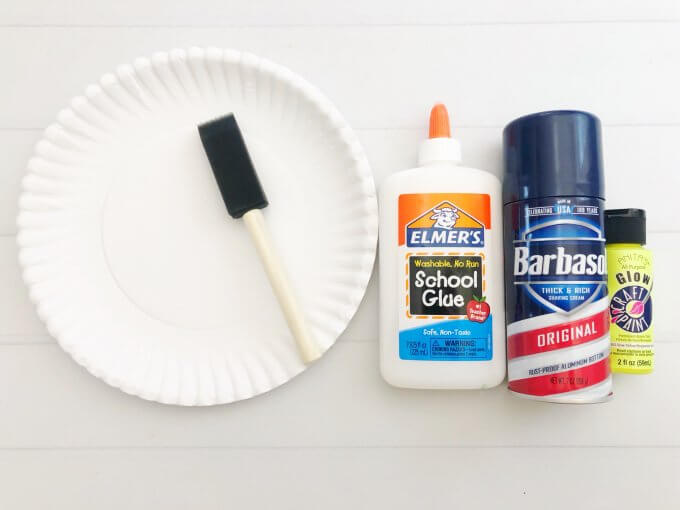
Instructions:
STEP 1: In a mixing bowl, measure and add 1 cup of shaving cream.
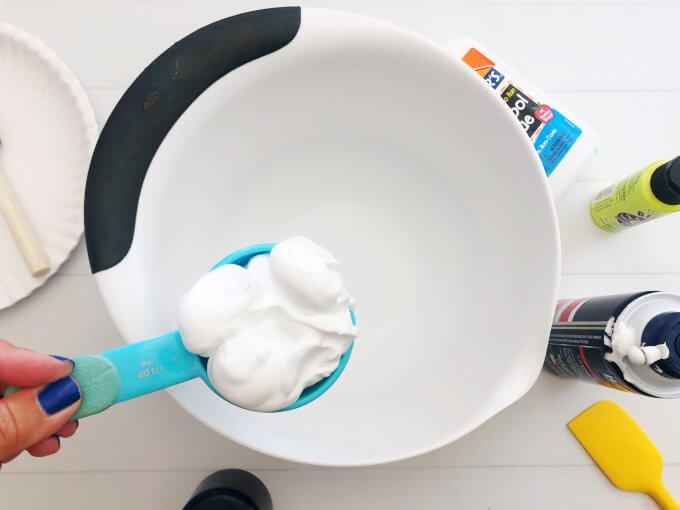
STEP 2: Using 1/3 cup, fill almost to the top with glue, leaving room for a tablespoon or so of glow paint and pour the glue mixture into the shaving cream. Mix together well with a spatula.
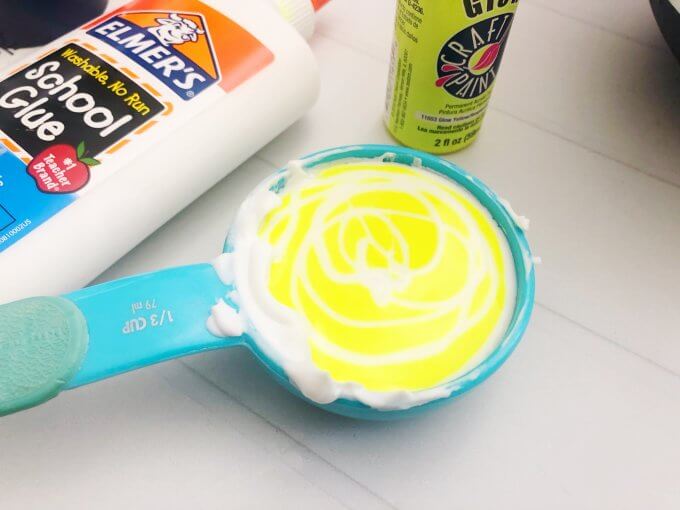
STEP 3: Use a paintbrush to paint your homemade glow in the dark puffy paint onto the paper plates. Leave it to dry overnight. You can even leave spots for craters!
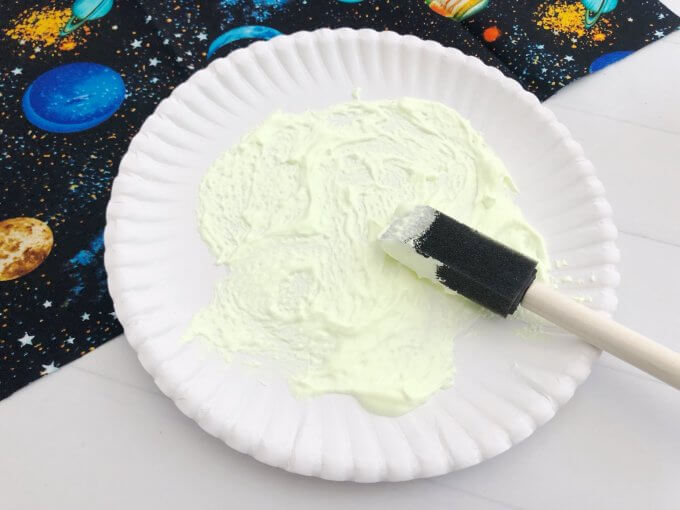
STEP 4: Cut the plates into different Moon phases if desired when they are dry.
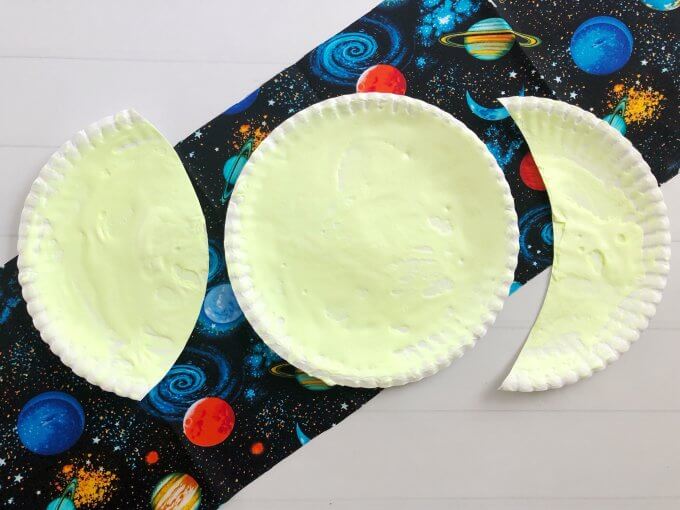
STEP 5: Place the Moon in the light, and then bring it into a dark room to watch it glow.
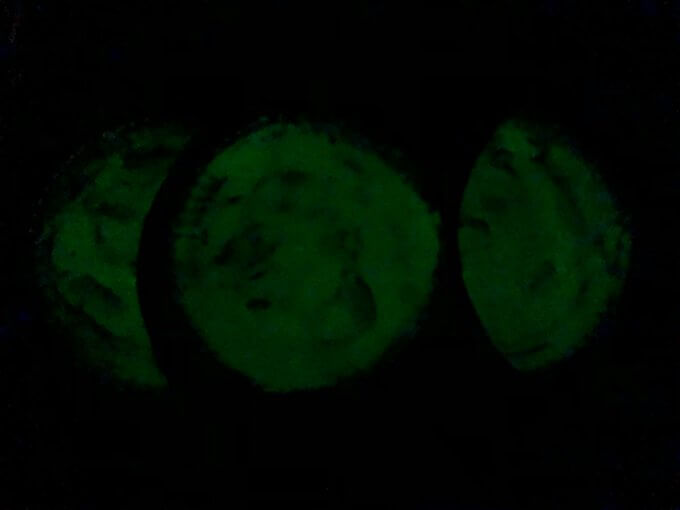
What Are The Phases Of The Moon?
The phases of the Moon are the different ways the Moon looks from Earth over the course of about a month!
As the moon orbits around the Earth, the half of the moon that faces the sun will be lit up. The different shapes of the lit up portion of the moon that can be seen from the Earth are known as the phases of the Moon.
Each phase repeats itself every 29.5 days. There are 8 phases that the moon goes through.
Here are the moon phases in order:
- NEW MOON: A new moon cannot be seen because we are looking at the unlit half of the Moon.
- WAXING CRESCENT: This is when the Moon looks like a crescent and gets bigger in size from one day to the next.
- FIRST QUARTER: Half of the lit portion of the Moon is visible.
- WAXING GIBBOUS: This occurs when more than half of the lit portion of the Moon can be seen. It gets bigger in size day by day.
- FULL MOON: The entire lit portion of the moon can be seen!
- WANING GIBBOUS: This occurs when more than half of the lit portion of the Moon can be seen but it gets smaller in size day by day.
- LAST QUARTER: Half of the lit portion of the Moon is visible.
- WANING CRESCENT: This is when the Moon looks like a crescent and gets smaller in size from one day to the next.
Fun Books About The Moon
Pair this puffy paint moon craft with an interesting story about the moon. Here are eight books about the moon that are suitable for children aged 4 to 8:
“Papa, Please Get the Moon for Me” by Eric Carle: In this beautifully illustrated book, a young girl named Monica asks her father to bring her the moon. Through a creative and imaginative story, children learn about the phases of the moon and the importance of perseverance.
“Kitten’s First Full Moon” by Kevin Henkes: This Caldecott Medal-winning book follows the adventures of a curious kitten who mistakes the full moon for a bowl of milk. Children will enjoy following the kitten’s journey as it tries to reach the moon and learns valuable lessons along the way.
“The Moon Book” by Gail Gibbons: Gail Gibbons provides an informative and engaging introduction to the moon in this non-fiction book. With detailed illustrations and clear explanations, children will learn about the moon’s phases, lunar exploration, and its influence on Earth.
“Goodnight Moon” by Margaret Wise Brown: A beloved classic, “Goodnight Moon” is a soothing bedtime story that follows a little bunny as it says goodnight to various objects in its room, including the moon. With rhythmic text and comforting illustrations, this book is perfect for bedtime reading.
“Moonshot: The Flight of Apollo 11” by Brian Floca: This beautifully illustrated book tells the story of the Apollo 11 mission, which culminated in the first moon landing. Through vivid illustrations and descriptive text, children will learn about the historic journey to the moon and the astronauts who made it possible.
“If You Decide to Go to the Moon” by Faith McNulty: In this imaginative book, children are invited on a journey to the moon. Through engaging text and stunning illustrations, readers will learn about the challenges and wonders of space travel, from liftoff to lunar exploration.
“The Moon Seems to Change” by Franklyn M. Branley: This informative book explores the phases of the moon and explains why the moon appears to change shape throughout the month. With clear explanations and simple diagrams, children will gain a better understanding of lunar cycles.
“The Moon is Going to Addy’s House” by Ida Pearle: In this lyrical and beautifully illustrated book, a young girl named Addy watches as the moon follows her on her journey home from a friend’s house. Children will be enchanted by the dreamy illustrations and poetic text as they join Addy on her nighttime adventure.
More Fun Moon Activities For Kids

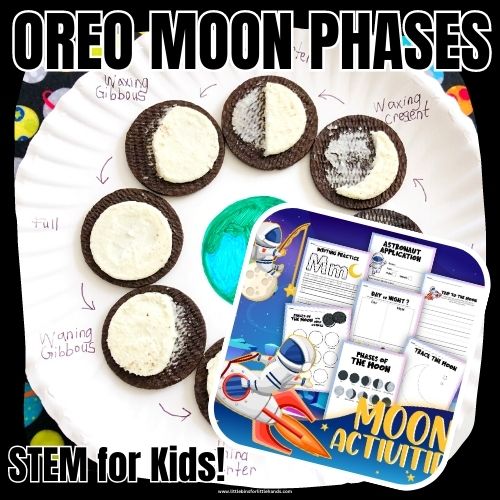
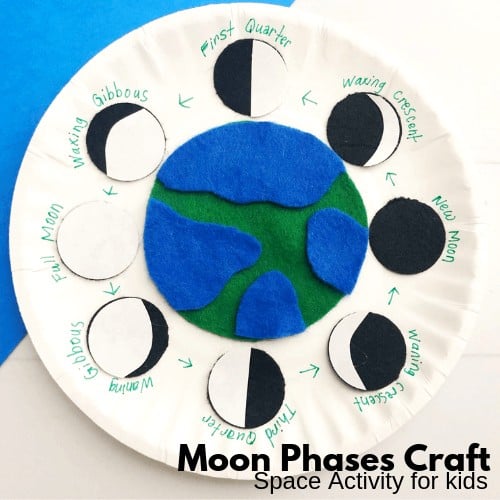
Printable Space Projects Pack
With 250+ pages of hands-on fun space themed fun, you can easily explore classic space themes with your kiddos including moon phases, constellations, the solar system, and of course the 1969 Apollo 11 lunar landing with Neil Armstrong.
⭐️ Activities include supply lists, instructions, and step-by-step pictures. Also Includes FULL Space Camp Week. ⭐️
Celebrate the 1969 lunar landing with easy-to-do activities at home, with groups, at camp, or in the classroom. Read up on this famous event and learn more about Neil Armstrong as well.
- Moon STEAM activities combine science, technology, engineering, art, and math with supply lists, set up and process photos, and science information. Craters, fizzy moon rocks, edible moon phases, watercolor galaxies, a DIY planetarium, bottle rocket, and so MUCH MORE!
- Printable Moon STEM challenges that are simple but engaging for home or classroom. Also included, is a Moon theme STEM Story with challenges perfect for going on a STEM adventure inside or outside!
- Moon phases & Constellation activities include charting moon phases, oreo moon phases, moon phases mini book, and more!
- Solar System activities include a solar system lapbook template and plenty of information to learn about the solar system and beyond!
- Moon extras include I-Spy, algorithm game, binary code project, 3D rocket building, thaumatropes, and MORE!



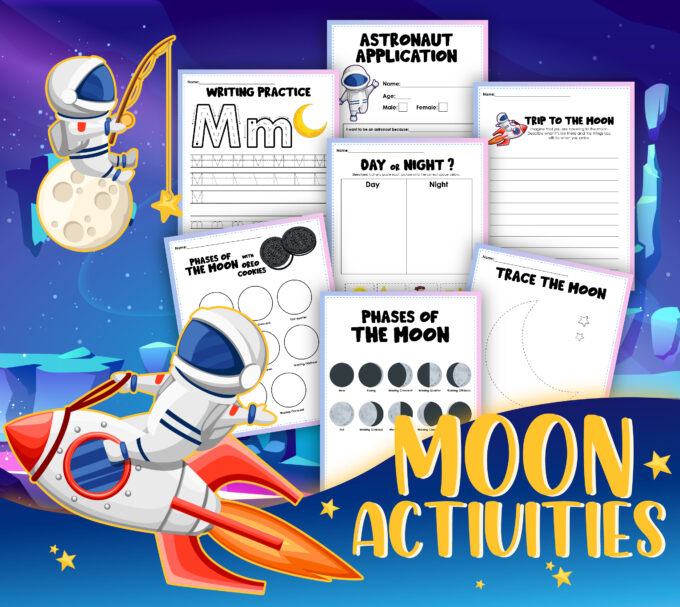
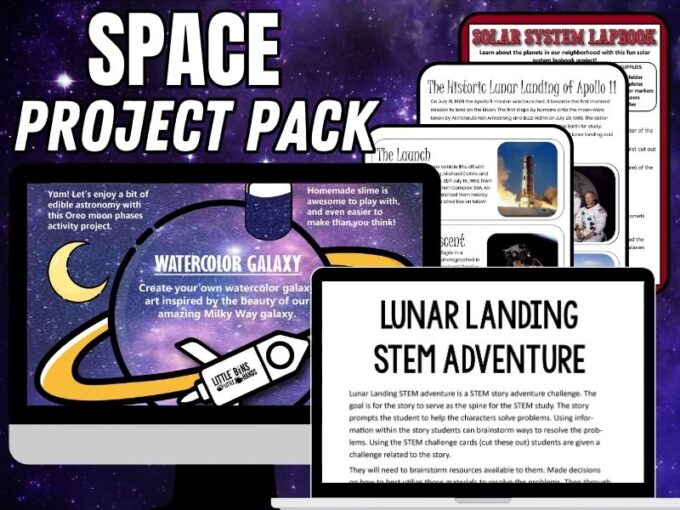






One Comment
Comments are closed.